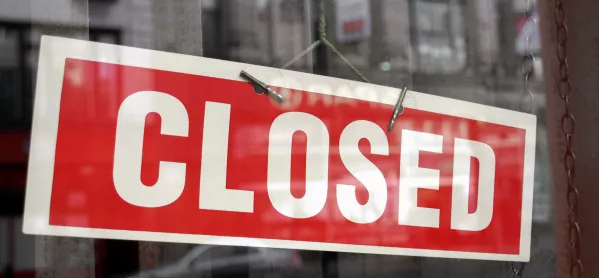- Home
- ‘LGBT people must be visible in the curriculum’
‘LGBT people must be visible in the curriculum’

Today, Stonewall has published new research looking into the unique experiences of lesbian, gay, bi and trans people who are not in education, training or work.
In Shut Out, 30 LGBT young people shared their experiences leading up to and during their time being outside of education, employment or training. The research uncovered themes which will be familiar to many LGBT people, but for the first time, pulled them all together to paint a holistic picture of the challenges that LGBT young people face, and the long-lasting impacts they can have.
Growing up is hard for everyone. Going through the process of understanding who you are and finding your place in the world is difficult and personal. But growing up LGBT can be particularly hard, as anti-LGBT bullying rates remain widespread, while visible lesbian, gay, bi and trans role models are still so few and far between. Our 2017 School Report found that almost half (45 per cent) of LGBT pupils are bullied because they are LGBT and two in five (40 per cent) have never been taught about LGBT identities in their school.
Background: LGBT students struggle with college transition
Opinion: ‘Being LGBT in college is getting better’
More: How to ensure your apprenticeships are LGBT+ friendly
Continuing in their education
As the saying goes: you can’t be what you can’t see. When there aren’t any examples of LGBT people for a young person to see, it’s easy to assume that being different is a bad thing. Many participants we spoke to explained how being bullied in school, and feeling like they didn’t belong, prevented them from continuing on in their education.
Sam, a 17-year-old gay man, said: “I knew I was not going to continue in education and that I wouldn’t be able to...I can’t deal with the negative energy tied to my sexuality.”
Many of the LGBT young people we heard from also found it difficult coming out to their family or friends, or finding a support network who understand their experiences. Only two in five LGBT young people (40 per cent) have an adult at home they can talk to about their identity.
The young people explained that having trouble at home or being rejected by their family because of who they were made it significantly harder for them to focus on their education or work.
Adela, a 23-year-old bi/pan woman from Wales, said: “At 16, I went to live with my partner. That was good for a while, but we split up when I was 19 so I didn’t have anywhere to live...I wasn’t working or looking for a job at that point. It’s not really what your main focus is, is it?”
These challenges can also significantly affect a person’s mental health and self-confidence. Sadly, it’s not uncommon for LGBT people to experience mental health difficulties, with our previous research revealing that two-thirds of LGBT 18- to 24-year-olds (64 per cent) have experienced depression in the last year.
Mental health challenges can also contribute to difficulties at work or school, like struggling to concentrate on studies or heightened anxieties of being fired. This can be another factor that leads LGBT young people to end up shut out of work and education.
Finally, our research found that LGBT young people found it extremely tough to re-enter school, college, university or employment after leaving. Some told us this was because they couldn’t find practical support services that were LGBT inclusive, while others feared they would encounter the same discrimination that led them to leave in the first place.
Shut Out breaks new ground in our understanding of LGBT people’s experiences. We are finally hearing from young LGBT people about the challenges they’ve faced, and what affect this has had.
With the right support, we can change this narrative from the very start. Creating LGBT-inclusive environments in the classroom is a huge step towards making every child and young person feel included and accepted. Including lesbian, gay, bi and trans people in education reduces anti-LGBT bullying and helps young people who are LGBT or from LGBT families feel that they can belong.
This is something that can start at any school level. Whether by incorporating LGBT families into existing parts of the curricula, such as in maths questions, to teaching about LGBT history and role models.
Along with making LGBT people visible in the curriculum, it’s also important that careers guidance is good quality and LGBT inclusive and that schools, colleges and local authorities ensure there is inclusive and available pastoral and mental health support for LGBT young people, to help them work through challenges if and when they arise.
Employers must also take action to open the door for LGBT people by making inclusion a priority. When work is a place that someone can be themselves, people can work at their best. This means not having to worry about how much to share about their lives or fearing discrimination because they are LGBT.
By making these changes, we can make sure that every LGBT young person is supported through their education and into training and work. We must start opening the doors, so LGBT young people no longer need to worry that they could be shut out because of who they are.
Mo Wiltshire is director of education and youth at Stonewall.
If you are a school, college, training provider or local authority, find out more about LGBT inclusion here. For more information about how to make your workplace LGBT inclusive, see here.
Keep reading for just £1 per month
You've reached your limit of free articles this month. Subscribe for £1 per month for three months and get:
- Unlimited access to all Tes magazine content
- Exclusive subscriber-only stories
- Award-winning email newsletters